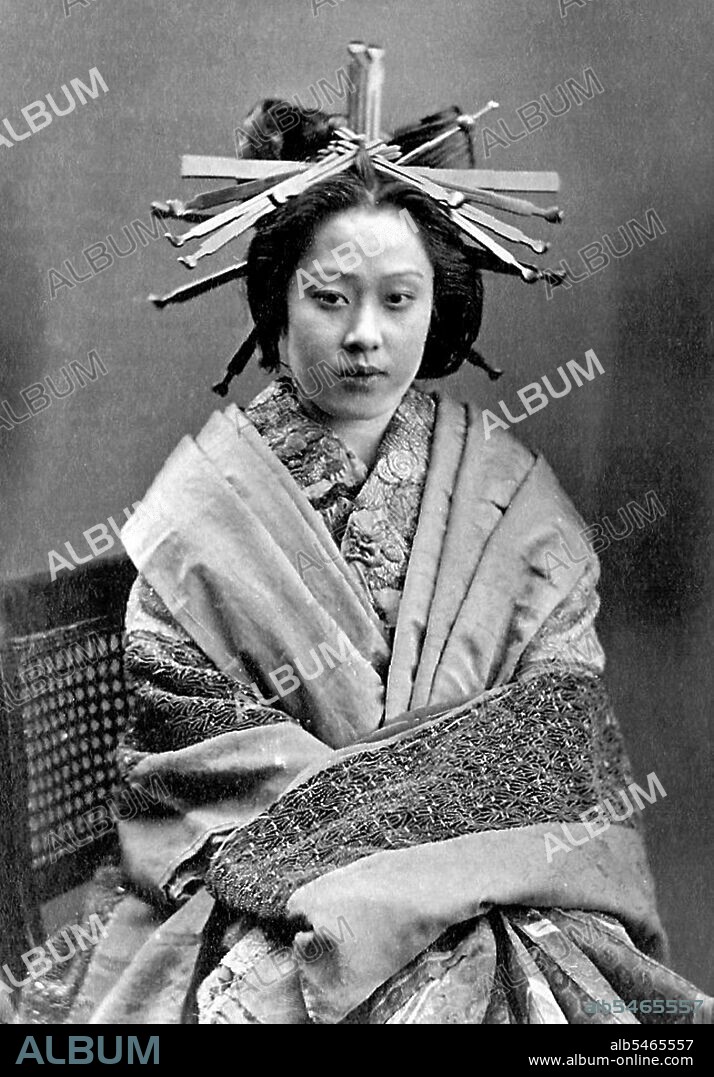alb5465557
Japan: An oiran or courtesan-prostitute, early 20th century

|
Ajouter à une autre Lightbox |
|
Ajouter à une autre Lightbox |



Avez-vous déjà un compte? S'identifier
Vous n'avez pas de compte ? S'inscrire
Acheter cette image

Titre:
Japan: An oiran or courtesan-prostitute, early 20th century
Légende:
Voir la traduction automatique
Oiran (??) were the courtesans of Edo period Japan. The oiran were considered a type of yujo (??) 'woman of pleasure' or prostitute. However, they were distinguished from the yujo in that they were entertainers, and many became celebrities of their times outside the pleasure districts. Their art and fashions often set trends among the wealthy and, because of this, cultural aspects of oiran traditions continue to be preserved to this day. The oiran arose in the Edo period (1600–1868). At this time, laws were passed restricting brothels to walled districts set some distance from the city center. In the major cities these were the Shimabara in Kyoto, the Shinmachi in Osaka, and the Yoshiwara in Edo (present-day Tokyo). These rapidly grew into large, self-contained 'pleasure quarters' offering all manner of entertainments. Within, a courtesan’s birth rank held no distinction, which was fortunate considering many of the courtesans originated as the daughters of impoverished families who were sold into this lifestyle as indentured servants. Instead, they were categorized based on their beauty, character, education, and artistic ability. Among the oiran, the tayu (??) was considered the highest rank of courtesan and were considered suitable for the daimyo or feudal lords. In the mid-1700s courtesan rankings began to disappear and courtesans of all classes were collectively known simply as 'oiran'. The word oiran comes from the Japanese phrase oira no tokoro no nesan (????????) which translates as 'my elder sister'. When written in Japanese, it consists of two kanji, ? meaning 'flower', and ? meaning 'leader' or 'first', hence 'Leading Flower' or 'First Flower'.
Crédit:
Album / Pictures From History/Universal Images Group
Autorisations:
Modèle: Non - Propriété: Non
Questions sur les droits?
Questions sur les droits?
Taille de l'image:
3500 x 5019 px | 50.3 MB
Taille d'impression:
29.6 x 42.5 cm | 11.7 x 16.7 in (300 dpi)
Mots clés:
ART (CATÉGORIE) • ART • ART, PHOTOGRAPHIE • ASIE • ASIE, CONTINENT • CONTINENT ASIE • COURTISANE • FEMELLE • FEMM • FEMME • FILLE DE JOIE • HISOIRE • HISTOIRE • INSTANTANE (PHOTO) • INSTANTANÉ • JAPON • JAPONAIS • JAPONAISE • KIMONO • MODE • MODE: MASCULINE • ORNEMENT, JAPONAIS • PHOTOGRAPHIE • PROSTITUÉE • PROSTITUÉES • PUTAIN • SEXE • SEXUALITE PROSTITUEES • SNAPSHOT • STYLE • VETEMENT: MODE
 Pinterest
Pinterest Twitter
Twitter Facebook
Facebook Copier le lien
Copier le lien Email
Email
